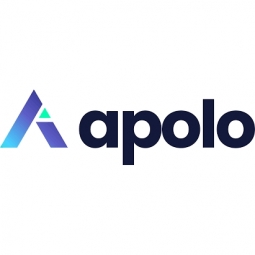公司规模
Large Corporate
地区
- Europe
国家
- Germany
- France
- Italy
- Spain
- United Kingdom
产品
- DeepCycle
- Neu.ro Platform
技术栈
- Deep Learning
- AI
实施规模
- Enterprise-wide Deployment
影响指标
- Innovation Output
- Digital Expertise
技术
- 分析与建模 - 机器学习
- 分析与建模 - 计算机视觉软件
适用行业
- 医疗保健和医院
- 生命科学
适用功能
- 产品研发
用例
- 质量预测分析
- 计算机视觉
服务
- 数据科学服务
关于客户
EMBL 成立于 1974 年,是欧洲生命科学领域的旗舰实验室。它是一个政府间组织,拥有 80 多个独立研究小组,涵盖分子生物学的各个领域。EMBL 在六个地点开展业务:海德堡、巴塞罗那、汉堡、格勒诺布尔、罗马和 EMBL-EBI 欣克斯顿。该组织以其分子生物学研究而闻名,并致力于开发该领域的新技术和方法。EMBL 的研究由来自 80 多个国家的 1600 多名员工进行,其预算由其成员国的公共研究资金资助。
挑战
欧洲生命科学旗舰实验室 EMBL 的研究人员希望利用深度学习来增强传统微生物学方法。他们的目标是重建构成细胞生命周期的复杂生物现象。由于细胞生命周期的复杂性和传统微生物学方法的局限性,这是一个重大挑战。EMBL 在欧洲设有六个站点,拥有 80 多个独立研究小组,涵盖分子生物学的各个领域。挑战在于开发一种解决方案,可以准确模拟细胞生命周期并提供对复杂生物过程的洞察。
解决方案
EMBL 与全球 AI 研究人员合作开发了 DeepCycle,其中包括 Neuromation 首席研究官 Sergey Nikolenko 和高级 AI 研究员 Alexander Rakhlin。DeepCycle 是一种 AI 驱动的技术,可以模拟细胞的生命周期——它们如何生长和分裂。该解决方案是在 Neu.ro 平台上开发的,该平台旨在开发和部署 AI 和机器学习解决方案。使用大约 260 万张犬肾细胞的显微镜图像,这种新颖的深度学习模型能够仅基于视觉数据重建复杂的生物现象。这种创新方法在癌症研究和其他医疗保健领域具有潜在的应用价值。
运营影响
数量效益

Case Study missing?
Start adding your own!
Register with your work email and create a new case study profile for your business.
相关案例.

Case Study
Hospital Inventory Management
The hospital supply chain team is responsible for ensuring that the right medical supplies are readily available to clinicians when and where needed, and to do so in the most efficient manner possible. However, many of the systems and processes in use at the cancer center for supply chain management were not best suited to support these goals. Barcoding technology, a commonly used method for inventory management of medical supplies, is labor intensive, time consuming, does not provide real-time visibility into inventory levels and can be prone to error. Consequently, the lack of accurate and real-time visibility into inventory levels across multiple supply rooms in multiple hospital facilities creates additional inefficiency in the system causing over-ordering, hoarding, and wasted supplies. Other sources of waste and cost were also identified as candidates for improvement. Existing systems and processes did not provide adequate security for high-cost inventory within the hospital, which was another driver of cost. A lack of visibility into expiration dates for supplies resulted in supplies being wasted due to past expiry dates. Storage of supplies was also a key consideration given the location of the cancer center’s facilities in a dense urban setting, where space is always at a premium. In order to address the challenges outlined above, the hospital sought a solution that would provide real-time inventory information with high levels of accuracy, reduce the level of manual effort required and enable data driven decision making to ensure that the right supplies were readily available to clinicians in the right location at the right time.

Case Study
Gas Pipeline Monitoring System for Hospitals
This system integrator focuses on providing centralized gas pipeline monitoring systems for hospitals. The service they provide makes it possible for hospitals to reduce both maintenance and labor costs. Since hospitals may not have an existing network suitable for this type of system, GPRS communication provides an easy and ready-to-use solution for remote, distributed monitoring systems System Requirements - GPRS communication - Seamless connection with SCADA software - Simple, front-end control capability - Expandable I/O channels - Combine AI, DI, and DO channels

Case Study
Driving Digital Transformations for Vitro Diagnostic Medical Devices
Diagnostic devices play a vital role in helping to improve healthcare delivery. In fact, an estimated 60 percent of the world’s medical decisions are made with support from in vitrodiagnostics (IVD) solutions, such as those provided by Roche Diagnostics, an industry leader. As the demand for medical diagnostic services grows rapidly in hospitals and clinics across China, so does the market for IVD solutions. In addition, the typically high cost of these diagnostic devices means that comprehensive post-sales services are needed. Wanteed to improve three portions of thr IVD:1. Remotely monitor and manage IVD devices as fixed assets.2. Optimizing device availability with predictive maintenance.3. Recommending the best IVD solution for a customer’s needs.

Case Study
HaemoCloud Global Blood Management System
1) Deliver a connected digital product system to protect and increase the differentiated value of Haemonetics blood and plasma solutions. 2) Improve patient outcomes by increasing the efficiency of blood supply flows. 3) Navigate and satisfy a complex web of global regulatory compliance requirements. 4) Reduce costly and labor-intensive maintenance procedures.

Case Study
Cloud-based healthcare solution for Royal Philips
Royal Philips wanted to launch its cloud-based healthcare solution HealthSuite Digital Platform in China to deliver services to help cope with challenges related to urbanization and population growth. Philips wanted to achieve this goal by combining mobile, cloud computing and big data technologies. To bring this platform and product to market, Philips required cloud computing and local technical service capabilities in China, in addition to a flexible IT infrastructure that could handle user requests.








